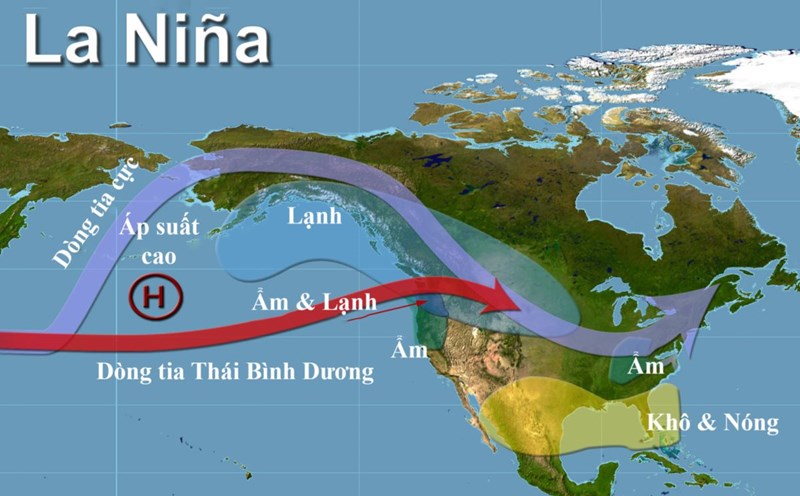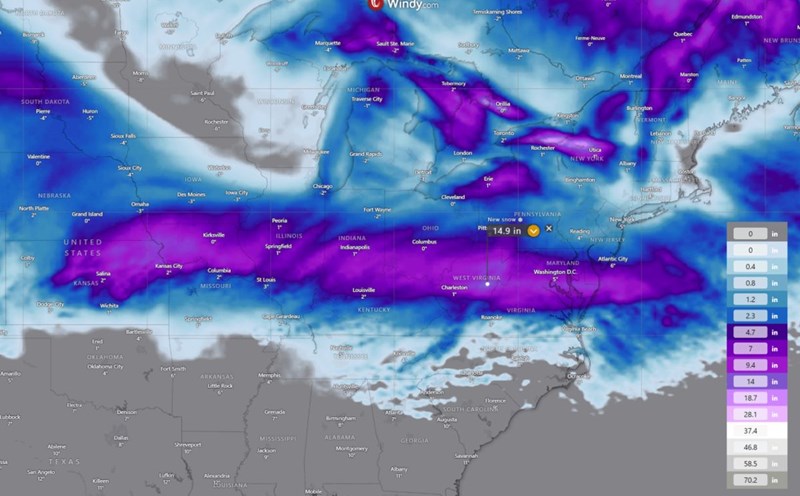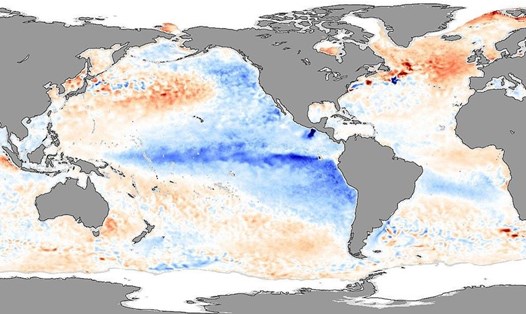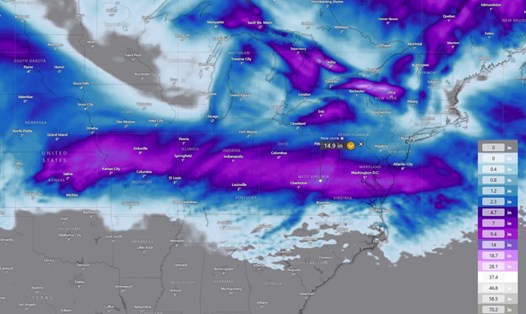ABC News reported that the terrible winter storm is covering the southern United States, causing record-breaking snowfall in several cities, with the heaviest snowfall in recent decades.
On January 10 local time, 20 states, from Texas to Delaware, were warned of snow and ice as the storm continued to move through the southern United States. The storm forced governors to declare states of emergency in several states such as Alabama, Arkansas, Georgia, Tennessee and Texas to prepare for severe weather conditions.
Several states have seen up to 30cm of snow fallen during the storm. In Arkansas, up to 35cm of snow fell, while Little Rock recorded 18cm - the heaviest snowfall in the past 4 years.
Areas of Oklahoma and Texas also recorded 30cm of snow, while Oklahoma City recorded a record 9cm in a day; Amarillo (Texas) recorded up to 24cm - the most snowfall in the past 10 years.
Mississippi recorded 18cm of snow, while Alabama 15cm and snow continued to fall in the states. Alabama's city of Birmingham has 5cm of snow, the heaviest in 11 years.
Memphis, Tennessee, recorded 18 inches of snow, the most snow in a day in 40 years.
In this context, heating stations have been activated across Georgia as the state experiences temperatures below freezing. Heating stations in the North Georgia area were all but full on the morning of January 10, Governor Brian Kemp announced. He also recommended that people who seek shelter should best go to the South instead of the North.
The storm also seriously affected traffic as more than 3,000 flights nationwide were canceled as of the afternoon of January 10, with airports in Atlanta, Charlotte, Dallas and Nashville being hit hardest. Officials warn of dangerous traffic conditions due to snow and ice on the routes.
Several schools in Atlanta and Memphis were closed on January 10 due to bad weather. snow and ice are forecast to continue spreading to the Carolina and the East Coast on January 11. North Carolina Governor Josh Stein has declared a state of emergency ahead of the storm.
Meanwhile, in Vietnam, the National Center for Hydro-Meteorological Forecasting predicts that in the afternoon and night of January 11, cold air will continue to strengthen and affect some places in the South Central region.
From January 11-13, in the North and Thanh Hoa - Nghe An, it will be very cold, especially in the mountainous and midland areas of the North, it will be very cold; in the area from Ha Tinh to Quang Ngai, it will be cold.
The lowest temperature in this cold air mass in the North and the Thanh Hoa - Nghe An area is generally from 9-12 degrees, the Northern mountainous areas are 6-9 degrees, the high mountainous areas are below 3 degrees; the Ha Tinh - Quang Binh area is generally 13-16 degrees; the area from Quang Tri to Quang Ngai is 15-18 degrees.
Hanoi area from January 11-13, the weather will be very cold. The lowest temperature in this cold air mass is generally 9-12 degrees.











